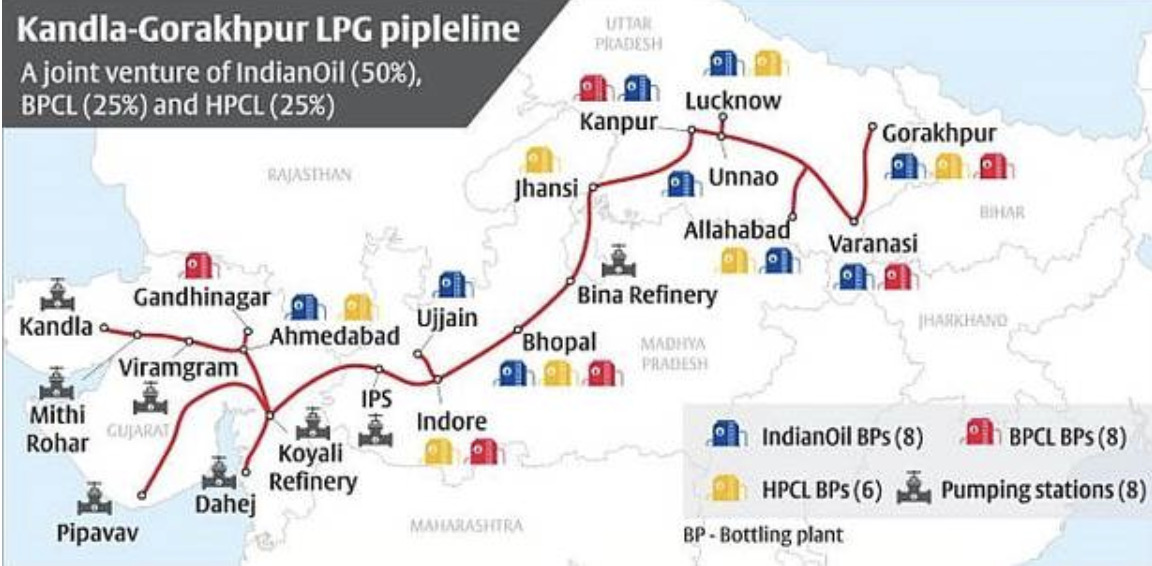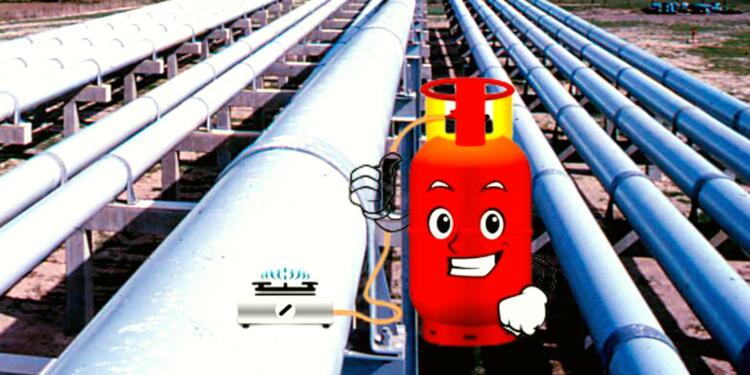India has never been short of resources. What it lacks is clear, distinctive and bureaucratic hurdle free redistribution. The distribution of Liquefied Petroleum gas (LPG) has been one such area. Now, the Modi government is set to change it with the world’s longest LPG pipeline. It is expected to fulfil a major chunk of needs in India’s energy sector.
Kandla to be connected to Gorakhpur through the pipeline
India is currently well on its way to finishing the construction of a pipeline that would fulfil the energy needs of a quarter of its population. The cross-country project will connect the LPG abundant belt near Kandla in Gujarat to relatively LPG scarce areas of Gujarat, Madhya Pradesh and Uttar Pradesh.
The produced LPG will be taken from three LPG import terminals at Kandla, Dahej and Pipavav in Gujarat and two refineries at Koyali in Gujarat and Bina in Madhya Pradesh. Product picked up from these locations will be transferred for consumers’ use at Gujarat, Madhya Pradesh and Uttar Pradesh.
52 bottling plants to participate
The companies will be directly taking up LPG in their bottling plants and then distributing it to consumers. A total of 52 bottling plants will take up this responsibility. Uttar Pradesh will be handling the highest chunk of these plants with 13 in total. 6 plants in Madhya Pradesh and 3 plants in Gujarat will also participate in this project.
LPG bottling plant is a plant where LPG is put into bottles for storage. The plant has the facility to receive bulk LPG by pipeline from a reliable source or any area.
Through road-bridging, 30 more bottling plants will be availing LPG from this pipeline. 21 of these road-bridged plants are located in Rajasthan, Gujarat, Madhya Pradesh, Maharashtra and Uttar Pradesh. Other than the above, 9 bottling plants in UP will also be key participants. 1 plant each at Shahjahanpur, Farrukhabad, Kashipur, Lakhimpur Kheri, Saleempur, Bareilly, Sultanpur and two plants at Gonda are in the ambits of the under-construction pipeline.

The foundation stone of the massive project was laid by Prime Minister Narendra Modi in February 2019. CM Yogi and UP Governor Shri Ram Nayak were also present at the ceremony in Gorakhpur.
Read more: LPG subsidy to be replaced with cooking subsidy: NITI Aayog
Joint Venture will implement the project costing Rs 10,000 crores
The approximate cost of the project is around Rs 10,000 crores. Its total length is 2,757 km, which is a world record for any LPG project. Through this pipeline, nearly 8.25 million tonnes of LPG will pass on a yearly basis. This is about 25 per cent of India’s demand. It is expected that more than 34 crore households will directly benefit from the project.
The responsibility of this project has been handled by a joint venture (JV) of three state-run companies. These companies are Indian Oil Corporation (IOC), Bharat Petroleum Corporation (BPCL) and Hindustan Petroleum Corp Ltd (HPCL). IOC has 50 percent of the shares in JV while BPCL and HPCL are individually holding 25 percent of shares.
Read more: A PSU and Profit churning PSU, Indian Oil Corporation and its mammoth styrene monomer project
An increase in demand has led to an increase in efficiency
Earlier, the Kandla LPG import terminal was not good enough to handle the augmented requirement. Later in 2020, IOC decided to spend Rs 588 crores to increase the capacity from 600,000 tonnes per year to 2.5 million tonnes per year. Various other facilities in Rajkot, Sanad and Ahmedabad are being upgraded.
Read more: India becomes world’s 2nd largest LPG consumer after Modi govt’s Ujjwala Yojana push
India is nearing its target of making cooking gas available to 100 percent of its population. In 2020, India had made it possible for 97.5 percent of the population to have a cooking gas connection. In 2015, only 56 percent of the population could boast about gas connections. The spike in number is directly attributed to Pradhan Mantri Ujjwala Yojana (PMUY) started by PM Modi.
Read more: Ujjwala Yojana: 40 million new LPG connections with a jump of 45% in FY19
Currently, the total length of LPG pipelines in India is 8,296 km. While Kandla-Gorakhpur is supposed to be the highest in the country (and the world) after the Jamnagar-Loni LPG pipeline (length: 1414 km). Once completed, the project will open the avenues for many more such pipelines and India’s energy demand is not going to end in the wake of its rapid development prediction.































